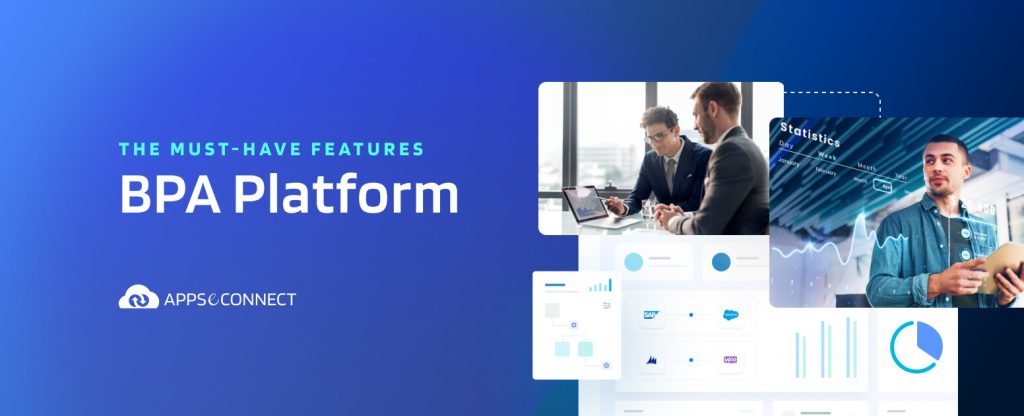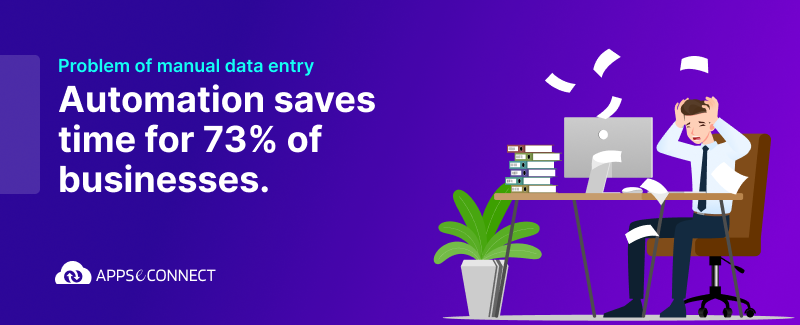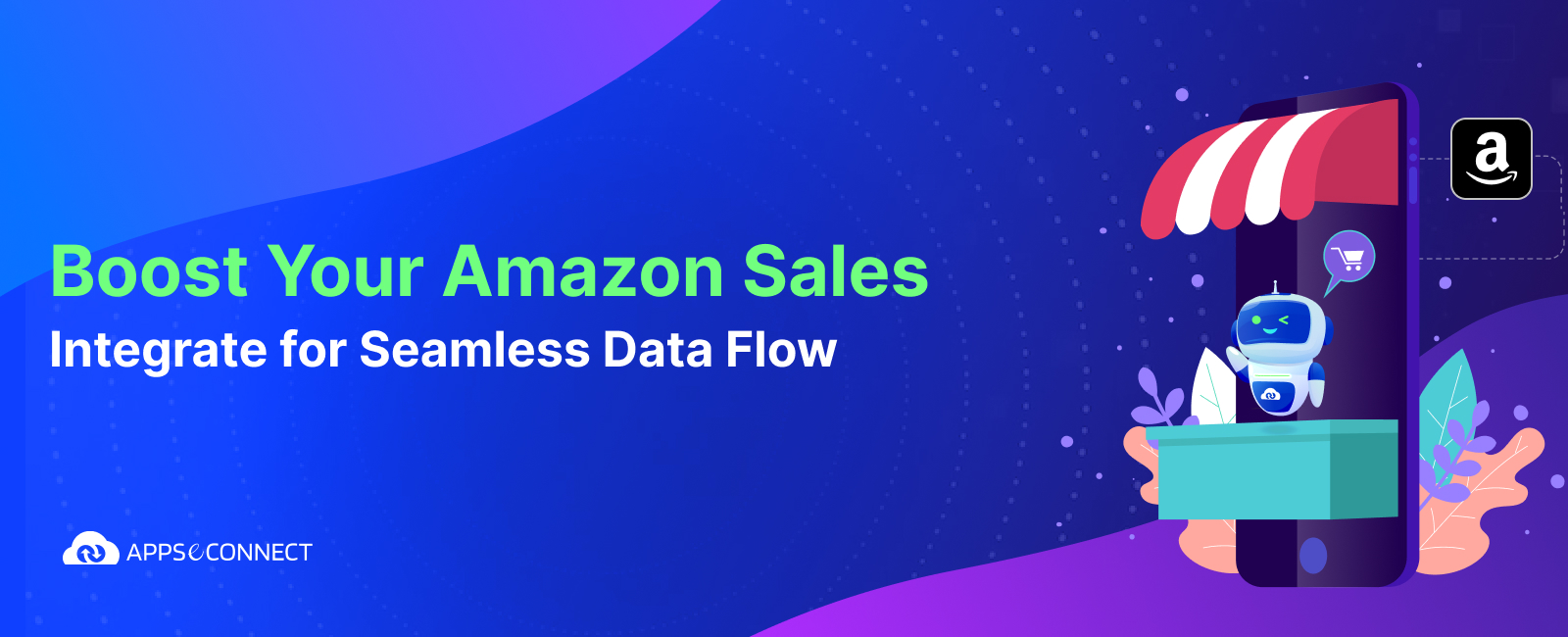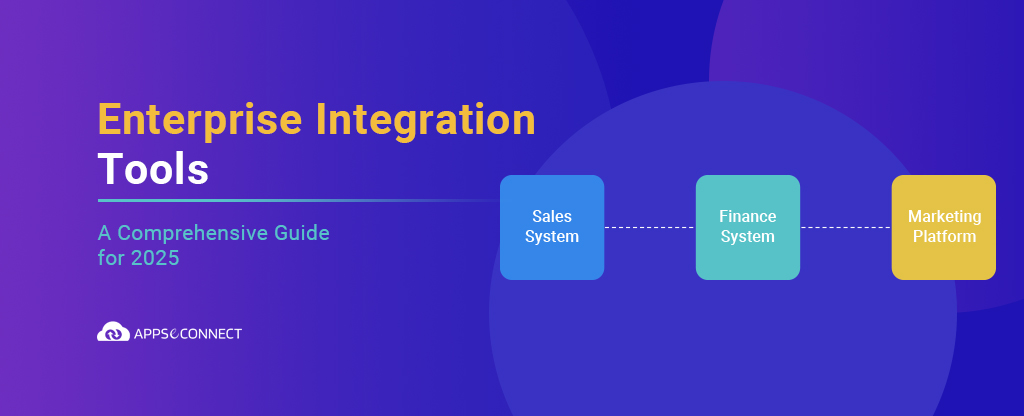In the current hyper-competitive market, being faster than the competition is the only way to achieve success. From quicker inventory management to faster order fulfillment, flexibility and agility in operations are the driving factors for business growth. To achieve this seamless acceleration of workflows across an organization, the implementation of a robust Business Process Automation platform is a necessity. A BPA platform enables full-stack integration of business applications across an organization and is one of the fundamental technologies for achieving organization-wide, faster automation of workflows.
If you are using multiple business applications to manage your organization and want to seamlessly achieve full-stack integration for all your line-of-business applications through a single platform to automate and streamline your business processes, then employ APPSeCONNECT’s Integration and achieve a new level of improvement to your business metrics.

What is a BPA Platform?
A BPA platform or a Business Process Automation platform is an Integration Platform as a Service (iPaaS) solution that automates processes and integrates business applications quickly and effortlessly across cloud, on-premises, and hybrid infrastructures. As a low-code solution, it removes the need for coding to develop the necessary automation for businesses to achieve their true potential with minimal effort and resources.
Some of the most widely integrated applications through a BPA platform include ERP applications like SAP ERP integration and Microsoft Dynamics integration, CRM applications like Salesforce integration, eCommerce platforms like Shopify integration and WooCommerce integration, and online marketplaces like Amazon Integration.
To learn more in detail about the capabilities of a BPA, check out the following Business Process Automation whitepaper:
Download the whitepaper to know more about Business Process Automation
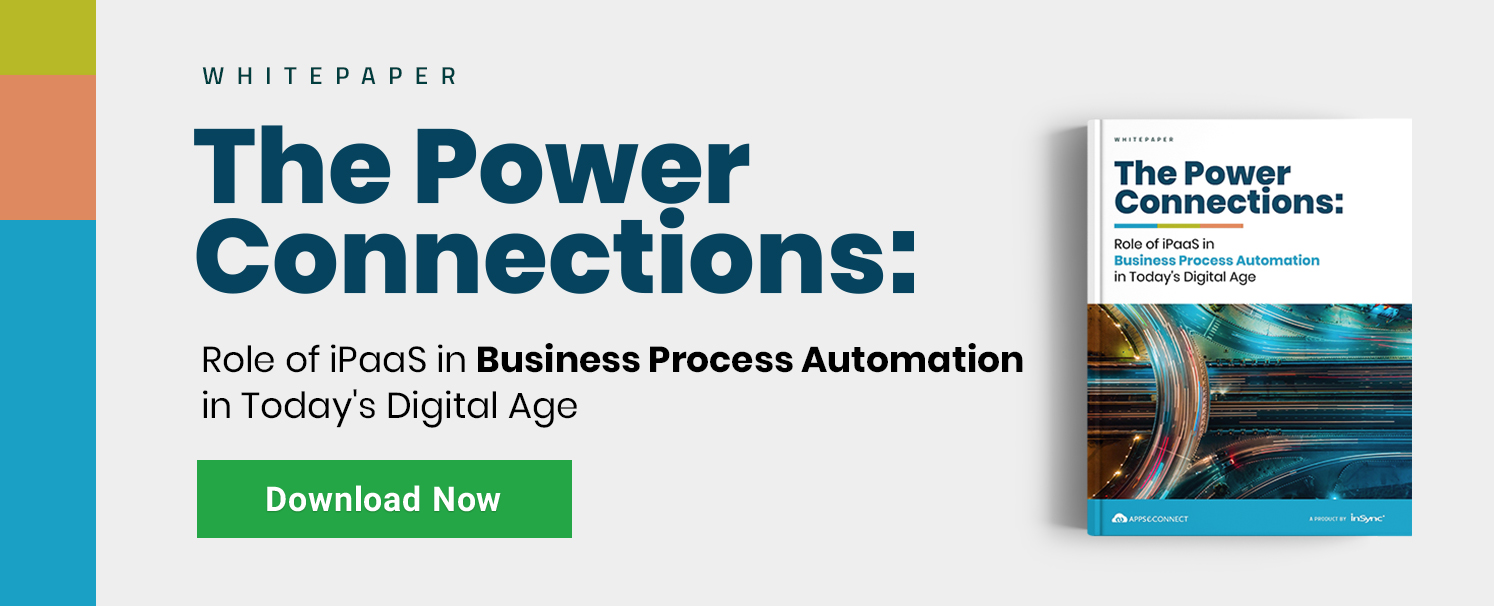
Top Must-Have Features for a BPA Platform.
With Gartner predictions showcasing 70% of global businesses implementing structured automation across their entire workflow by 2025, enterprises that fail to execute a BPA platform within their organization are guaranteed to fall behind their competitors. However, rushing to implement a BPA solution without proper consideration of the requirements and scope of the platform will result in a more negative effect than a positive one for the business in the long run. Thus, IT decision-makers need to consider the following must-have features for a BPA platform before implementing them into their enterprise’s digital ecosystem.
Real-Time Bidirectional Data Transfer
Modern enterprises deploy a wide range of applications to manage the workflows within their business. Each application operates with vast volumes of data that need to be synchronized across the software network to deliver a unified top-down view of information to decision-makers. A real-time bidirectional data sync is needed between the applications to ensure ready access to all the necessary information. Thus, a BPA platform must deliver real-time data transfer to allow organizations to analyze, interpret and visualize the data when it is created or being updated. Through real-time data integration, enterprises can increase their business agility, quickly detect, and address operational issues, rapidly act upon short-term trend changes, improve customer experience with up-to-date customer behavior data, and much more.
Robust Data Security Infrastructure
During the third quarter of 2022, internet users globally experienced approximately 15 million data breaches. With a BPA platform operating with vast volumes of the most critical data the company generates, it needs to have a suite of robust security protocols to safeguard against potential data breaches. Having a platform that keeps confidential data secured across on-premises and cloud applications is prudent to ensure data security against hackers, cyber-attacks on the IT infrastructure, and corporate espionage. Thus, making sure that the selected BPA platform has a powerful security infrastructure and does not upload credentials to the cloud to keep sensitive data secure on the on-premises infrastructure is of utmost importance.
Smart API Versioning for Applications
One of the major functionalities a BPA platform should offer is API versioning. Every application integrated within an application will receive new updates throughout its life cycle. Manually updating the API for applications in the network is impractical. Thus, when a business application updates its API, the BPA platform should also automatically make the relevant and vital changes to the adapter to ensure compatibility in the integration architecture. Through the iteratively automatic version control offered by a BPA platform, the enterprise can roll back to an older version and upgrade to a newer version without risking any data loss.
Data Tracking and Error Management
With the vast volumes of data processed by a BPA platform, the solution must continuously track and monitor all the data passing through it. A BPA solution needs to have real-time data tracking and error management to offer users a unified view of all the synchronized data and allow filtering of errors to display only the problems faced by the application during data sync. The data tracking and monitoring allow users to address any data sync issue and resync the same when required. The error management tools should also provide detailed reports on errors and sync failures for future reference on similar scenarios.
Low-Code Integration Development
Having to develop an integration from scratch is the biggest challenge for an organization. The time and resources needed to have dedicated team members to code the integration from scratch is a big hurdle to fast scalable growth for businesses. Thus, BPA solutions must provide low code integration development capabilities to remove the long development life cycle associated with coding an application integration. With a BPA platform that offers a powerful and intuitive low-code, visual integration designer, any user can graphically create, view, and change the data flow for a process. It also allows for rapid development and deployment of changes to an existing process easily from anywhere.
Cloud, On-Premises, and Hybrid Deployment
Most organizations use a vast suite of applications across different cloud, on-premises, and hybrid infrastructures. To seamlessly integrate and automate workflows across multiple applications across different infrastructures, the BPA platform must have cloud, on-premises, and hybrid deployment capabilities. The platform should also be flexible to transition between the infrastructures to remove the cost of redeploying the BPA solution in case the organization decides to change its digital ecosystem in the future.
Personalized Rules and Actions
No two organizations are alike, even if they are of the same size or belong to the same industry vertical. Enterprises often have custom, business-specific needs; thus, a BPA platform needs to provide the capabilities to end-user to create rules according to their business-specific needs and trigger actions according to them. The platform must allow the user to design custom rule-based triggers based on a schedule or a pre-defined event, download the trigger rules, and execute them for the necessary workflows.
Support Standard API Protocols
While a BPA platform should come with a robust library of pre-packaged connectors for fast and flexible integration deployment, it is impossible for any BPA platform to design connectors for every single business application in the market. Custom applications developed in-house are unavailable in the public domain and fall outside the capabilities of a BPA platform to have pre-built integrations for them. Thus, the support for protocol-based adapters for all industry-standard APIs like FTP/Secure FTP, SOAP, REST, and SMTP must be offered by a BPA platform to directly allow generic adapters to be used to develop all the necessary custom integration.
Built-In Software Development Kit
Following up on the previous point of creating custom integration through standard API protocols, the BPA platform must also offer a packaged Software Development Kit (SDK) to develop adapters and plugins that can be used to implement custom integrations through the integration solution. A complete API help library for easier development is also a quality-of-life upgrade that can be considered when selecting a BPA platform.
Role-Based Administrator Functionalities
A BPA platform should offer a robust suite of role-based administrator functionalities to limit the accessibility of business-critical data to only the relevant team members. For business-sensitive data, the administrator should have the ability to define access levels. The BPA platform should allow the administrator to display only the required fields to the necessary user while limiting access to higher-level business-sensitive information and analytics. With role-based access control, the system administrator can create multiple users and assign specific roles, while also streamlining workflows, making it an essential feature for a BPA platform to have.
APPSeCONNECT – The Next-Gen BPA Platform That Your Business Needs.
APPSeCONNECT is the robust next-gen BPA that offers all these functionalities and more to eliminate business data silos and reduce manual data transfer. APPSeCONNECT’s powerful Visual Integration Designer, ProcessFlow is a wizard-based designer that enables users of every skill level to effortlessly design, deploy and monitor customization of all necessary integrations. The platform comes packed with a vast library of time-tested, pre-built connectors and integration packages to allow effortless integration of all standard line-of-business applications. APPSeCONNECT also offers protocol-based adapters for all industry standard APIs like FTP/Secure FTP, SOAP, REST, and SMTP for custom applications.
All these features are just the tip of the iceberg, to explore in detail all the advantages APPSeCONNECT can provide to business, head on to https://www.appseconnect.com/features/
Conclusion
Automation and integration have become essential for enterprises to accelerate all their business-critical workflows. Implementing a Business Process Automation or a BPA platform is prudent to achieve the agility modern organizations need to deliver faster to the market and grow successfully. However, selecting the right BPA platform is essential for having an effective and hurdle-free digital transformation journey. Understanding and rigorously evaluating a BPA platform to have all the necessary features and functionalities to not only integrate and automate business workflows but also to make a business smart prudent for a modern business to succeed.
If you are using multiple business applications to manage your organization and want to seamlessly achieve full-stack integration for all your line-of-business applications through a single platform to automate and streamline your business processes, then employ APPSeCONNECT’s Integration and achieve a new level of improvement to your business metrics.



